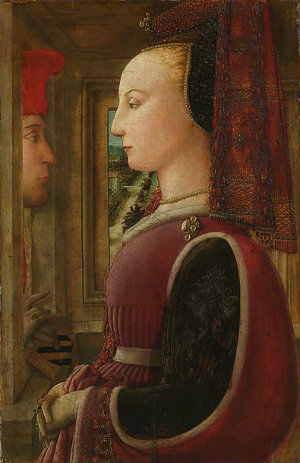Search:: Artists Alphabetically Artists by Country Artists by Century Artists by Movement
Fra Filippo Lippi
1406-1459
Florentine Painter of the Early Renaissance
Stylistically influenced by the following painters - Masaccio, Sassetta and Fra Angelico
Cause of Death - He was poisoned by a jealous lover.

Biography
Information and Facts About the Artist
About the Artist
Fra Filippo Lippi was born in Italy in 1406. His people were impoverished butchers and olive oil processors. Young Lippi was orphaned while still a small child and remanded to the care of his Aunt. Lippi was a difficult, unruly boy who wiled away his time thinking up pranks and hanging out with young ruffians. Overcome with disgust his caretaker handed him over to the good Friars at the local monastery. While at the monastery his creative talents were awakened and he sketched when not forced to be at prayer. With the encouragement of the older Friars, Lippi left the monastery but promised to retained his vow of celibacy and of poverty. He did neither. Lippi became an infamous carouser and libertine. According to Renaissance historian, Giorgio Vasari, "It is said that Fra Filippo was so lustful that he would give anything to enjoy a woman he wanted if he thought he could have his way; and if he couldn't buy what he wanted, then he would cool his passion by painting her portrait and reasoning with himself. His lust was so violent that when it took hold of him he could never concentrate on his work. Because of this, when he was doing something for Cosimo de' Medici, Cosimo had him locked in so he wouldn't wander off. After he had been confined for a few days, Fra Filippo's amorous, or rather animal, instincts drove him one night to seize a pair of scissors, make a rope from his own bedsheets, and escape through a window to pursue his own pleasures for days on end!"
Filippo Lippi rendered his subjects with incredible charm and tenderness. John C. Van Dyke, author and art historian, commented "He was a master of color and light-and-shade for his time, though in composition and command of line he did not reach up to Masaccio. He was among the first of the painters to take the individual faces of those about him as models for his sacred characters, and clothe them in contemporary costume. Piety is not very pronounced in any of his works, though he is not without imagination and feeling, and there is in his women a charm of sweetness. His tendency was to materialize the sacred characters."
Key Descriptive Words and Phrases associated with the Renaissance Movement - rebirth, rediscovery of the classical world, City-state, Humanism, Humanist, Francesco Petrarch, Reform, The Prince, Theocracy, The Inquisition, Human Reasoning, publication of Della Pittura, a book about the laws of mathematical perspective for artists, sfumato, chiaroscuro, linear perspective, Heliocentric Theory, vanishing point, Savonarola, spiritually significant, illuminated manuscript, idealized biblical themes, scriptorium, emotion, illuminator, Age of Discovery, axonometric drawing, curiosity about the natural world, mythology, realistic use of colours and light, Bonfire of the Vanities, Old Testament stories, ethereal and foggy backgrounds, Gospel parables, The Blackdeath, romanticized landscapes, Christian symbolism. Paradise
☼☼☼☼☼
Require more facts and information about the painter and the artists of the renaissance era? Poke around every nook and cranny of the known universe for information this subject. Search Here
© HistoryofPainters.com If you like this page and wish to share it, you are welcome to link to it, with our thanks.